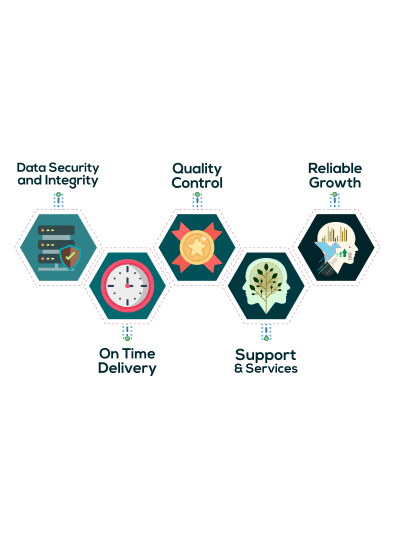
Preparing for Financial Freedom: Paying Off Loans Before 40
Many adults spend their entire 30s making monthly payments on student loans. These loans often start small, but they stick around long enough to impact big life choices—buying a home, starting a family, or even changing careers.
For some, the goal of being debt-free before 40 may sound out of reach. But with the right strategy and a shift in financial habits, it’s more doable than most people think. It doesn’t require major sacrifices. It starts with a plan, consistency, and a few smart decisions.
If you want to make real progress toward financial freedom, now’s the time to look at your student loans with fresh eyes and rethink your approach.
Review Your Current Loan Terms and Consider Refinancing
The first step is knowing what you’re working with. Look at your loan details—interest rates, repayment terms, monthly payment amounts, and whether your loans are federal or private. This gives you a full picture of how much you owe and how long it will take to pay it off at your current pace.
Once you have the numbers in front of you, refinancing may be worth a look. Refinancing involves replacing your current loan with a new one, typically to secure a lower interest rate or reduce the length of the repayment period. It’s a popular option for borrowers with good credit or a stable income. It can save money in the long run and help you pay off your balance faster.
Before deciding, use a student loan calculator to compare your current loan with different refinance options. This gives you a clearer view of how much you could save—or how fast you can pay it off. A calculator helps you visualize the real impact of a new interest rate or a shorter loan term, so you’re not guessing when making these decisions.
Refinancing isn’t right for everyone. If you have federal loans, you could lose access to certain repayment plans or loan forgiveness programs. But if you’re focused on cutting down interest and paying your loan off early, the trade-off could be worth it.
Make Extra Payments Toward Principal When Possible
One simple way to chip away at your loan faster is to send more than the minimum each month. Even small extra payments help reduce your balance, and when that balance drops, so does the interest it builds over time.
Focus those extra payments on the loan with the highest interest rate. Some lenders apply extra payments to future bills by default, so make sure the extra amount goes directly toward the principal. You can usually do this by adding a note with the payment or calling your loan servicer to confirm.
This doesn’t mean you have to find hundreds of extra dollars every month. Even $25 or $50 here and there makes a dent. If you get in the habit of adding a little more when you can, the results add up faster than you’d think.
Cut Unnecessary Spending and Redirect It Toward Loans
Daily spending habits can quietly delay your progress. Streaming subscriptions, food delivery, and unused gym memberships—these all add up over time. Tracking your monthly expenses helps you spot areas where money slips through without much thought.
Once you’ve identified a few things to cut back, redirect that money toward your student loans. Let’s say you stop ordering takeout twice a week and save $80 a month. Over a year, that’s $960—nearly a thousand dollars toward your balance without making drastic changes to your lifestyle.
You don’t have to cut everything. Just a few smarter decisions each month can free up cash for extra payments. The key is to give those dollars a clear purpose, rather than letting them disappear into everyday spending.
Automate Payments to Stay Consistent
When life gets busy, it’s easy to forget a due date. Setting up automatic payments helps you stay consistent. It also removes the stress of manually making a payment every month.
Many lenders offer a small interest rate reduction if you sign up for autopay. That half a percent may not sound like much, but over time, it lowers your total cost.
You’ll also avoid late fees and missed payments, which can hurt your credit. That’s important if you’re thinking about refinancing in the future or applying for a mortgage. Automating payments is one of the easiest ways to stay on track without needing reminders or extra effort.
Increase Payments After Raises or Windfalls
When you get a raise, bonus, or tax refund, it’s tempting to spend it. While treating yourself is fine in moderation, putting a portion of that money toward your student loan makes a real difference.
You’re already used to living on your current income. If you take even half of a raise and put it toward your loans, you’ll speed up repayment without feeling deprived. For example, a $200 monthly raise becomes $100 extra toward your balance. That adds up to $1,200 a year.
Windfalls, like a work bonus or cash gift, are also great opportunities. Instead of using the full amount on short-term splurges, consider putting a part of it toward your student loans. It shortens your timeline and helps you move closer to being debt-free by 40.
Keep Retirement and Emergency Savings in View
Paying off debt is important, but it shouldn’t leave you financially exposed. If you don’t have a savings cushion, one emergency could send you right back into debt. Before ramping up payments, build an emergency fund that is enough to cover at least a few months of expenses.
At the same time, try to contribute something to retirement savings. Even small amounts help build the habit. If your employer offers a 401(k) match, take advantage of it. That’s free money going toward your future.
Balancing loan repayment with savings may feel like a stretch at first. But building both at the same time sets you up for long-term security. You don’t want to clear your student loans and then realize you have nothing else in place.
Paying off student loans before 40 is possible. It doesn’t require massive income or perfect timing—just a clear plan and steady action. By cutting back in a few areas, redirecting extra income, and making smart payment decisions, you’ll gain momentum. With each step forward, you’ll feel a little more in control of your finances—and a lot closer to freedom.



